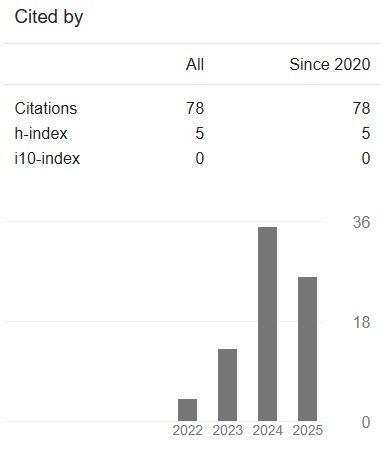Nondimensional translational characteristics of elastomer components
DOI:
https://doi.org/10.24191/jaeds.v1i1.20Keywords:
bogie, elastomer components, spring characteristics, finite element analysis, hyperelasticityAbstract
Elastomer components are used in both primary and secondary spring stages in bogies of rail vehicles. The design of spring components of a bogie requires knowledge of the calculation of the elastic properties of these components. An elastomer spring component is typically analyzed in the dimension to be investigated. Calculated force-displacement curves are directly related to the material and dimension of the component itself. The objective of this paper is to establish generalized or, in other words, universally valid force-displacement characteristics by breaking the entanglement with component size. The advantage of this approach is the extended validity of the results for a specific spring shape of any size. The simulations are performed only once for each shape and may be converted to any other size using the proposed methodology. A numerical study of a layer spring with rectangular cross-sectional area and fixed edges on both top and bottom sides serves as a reference example.
Downloads
References
A. N. Gent and P. B. Lindley, “The Compression of Bonded Rubber Blocks”, Proceedings of the Institution of Mechanical Engineers, vol. 173, no. 1, pp. 111–122, Jun. 1959.
L. S. Porter and E. A. Meinecke, “Influence of Compression upon the Shear Properties of Bonded Rubber Blocks”, Rubber Chemistry and Technology, vol. 53, no. 5, pp. 1133–1144, Nov. 1980.
D. W. Nicholson, N. W. Nelson, B. Lin, and A. Farinella, “Finite Element Analysis of Hyperelastic Components”, Applied Mechanics Reviews, vol. 51, no. 5, pp. 303–320, May 1998.
D. F. Lalo, M. Greco, and M. Meroniuc, “Numerical Modeling and Experimental Characterization of Elastomeric Pads Bonded in a Conical Spring under Multiaxial Loads and Pre-Compression”, Mathematical Problems in Engineering, vol. 2019, pp. 1–14, Feb. 2019.
R. K. Luo, L. M. Peng, X. P. Wu, and W. J. Mortel, “Load–deflection prediction and stress verification in extreme large deformation of rubber suspensions used in rail vehicles”, Proceedings of the Institution of Mechanical Engineers, Part F: Journal of Rail and Rapid Transit, vol. 226, no. 2, pp. 228–232, Aug. 2011.
P. Wriggers, Nonlinear finite element methods. Springer Berlin, 2010.
J. Bonet, A. J. Gil, and R. D. Wood, Nonlinear solid mechanics for finite element analysis: Statics, Cambridge University Press, 2016.
J. C. Simo, R. L. Taylor, and K. S. Pister, “Variational and projection methods for the volume constraint in finite deformation elasto-plasticity”, Computer Methods in Applied Mechanics and Engineering, vol. 51, no. 1–3, pp. 177–208, 1985.
G. Marckmann and E. Verron, “Comparison of Hyperelastic Models for Rubber-Like Materials”, Rubber Chemistry and Technology, vol. 79, no. 5, pp. 835–858, Nov. 2006.
R. W. Ogden, “Elastic Deformations of Rubberlike Solids” in Mechanics of Solids, Elsevier, 1982, pp. 499–537.
P. J. Flory, “Thermodynamic relations for high elastic materials”, Transactions of the Faraday Society, 1985, vol. 57, pp. 829–838.
E. F. Göbel, Gummifedern. Berechnung und Gestaltung, Springer Berlin Heidelberg, 1969.
W. Battermann and R. Köhler, “Elastomere Federung. Elastische Lagerung“, Wilhelm Ernst und Sohn Berlin München, 1982.
L. S. Porter and E. A. Meinecke, “Influence of Compression upon the Shear Properties of Bonded Rubber Blocks”, Rubber Chemistry and Technology, vol. 53, no. 5, pp. 1133–1144, Nov. 1980.
Downloads
Published
How to Cite
Issue
Section
License
Copyright (c) 2021 Andreas Dutzler

This work is licensed under a Creative Commons Attribution 4.0 International License.









